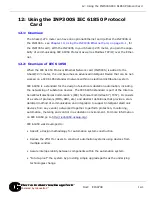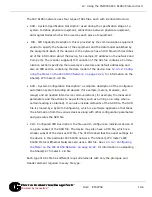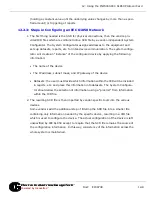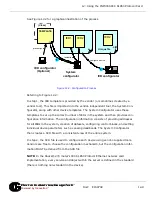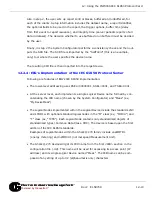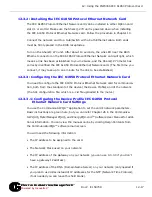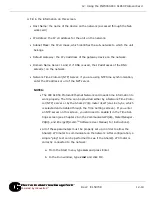
Doc
#
E159708
12-10
12: Using the INP300S IEC 61850 Protocol Card
Electro
Industries/GaugeTech
™
Powered by Innovation™
Also in step 2, the user sets up report control blocks, buffered and unbuffered, for
each of the clients. Setup information includes the dataset name, a report identifier,
the optional fields to be used in the report, the trigger options, buffer time (delay
from first event to report issuance), and integrity time (server periodic reports of all
data in dataset). The decision whether to use buffered or unbuffered must be decided
by the user.
Finally, in step 2 the System Configurator performs a consistency check and then out-
puts the SCD file. The SCD file is imported by the "ScdToCid" (this is an example,
only) tool where the user specifies the device name.
The resulting CID file is then imported into the target device.
12.2.4: EIG’s Implementation of the IEC 61850 Protocol Server
Following are features of EIG’s IEC 61850 implementation:
• The lower-level addressing uses PSEL=00000001, SSEL=0001, and TSEL=0001.
• At the server level, each implements a single Logical Device name formed by con-
catenating the IED name (chosen by the System Configurator) and "Meas" (ex,
"MyDeviceMeas").
• The Logical Nodes implemented within the Logical Device include the standard LLN0
and LPHD1 with optional standard logical nodes in the "M" class (ex, "MMXU") and
"T" class (ex, "TVTR"). Each Logical Node contains only standardized objects of
standardized types (Common Data Class, CDC). The device is based upon the first
edition of the IEC 61850 standards.
Examples of Logical Nodes within the Shark® 270 family include eneMMTR1
(energy metering) and nsMMXU1 (normal speed Measurement Unit).
• The Shark® 270 device will get its IED name from the first <IED> section in the
configuration file (.cid). This name will be used for accessing its access point (IP
address) and its single Logical Device named "Meas". The IED name can be com-
posed of any string of up to 32 (alphanumeric only) characters.






